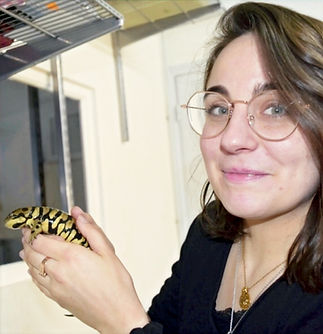
Morgane Fournier
Tetrapod evolution, morphological and functional diversity, geometric morphometrics
About my story and my research
I’m passionate about the morphological diversity of both living and extinct vertebrates. I studied in Paris, beginning with a bachelor’s degree at Université Pierre et Marie Curie, followed by a first master’s degree at Sorbonne Université, and a second master’s at the Centre de Recherche Interdisciplinaire (Université Paris). Throughout my academic journey, I had the chance to explore a wide range of topics during my internships, both in terms of methodology and taxa. This allowed me to develop strong skills in morphometrics, anatomy, functional morphology, and finite element analyses.
Before starting my PhD, I worked as an engineer on the X-ray Reconstruction of Moving Morphology (XROMM) of the bird vocal system, which deepened my interest in functional anatomy and biomechanical modeling.
I have joined the Meta-Morphosis team for my PhD. My research focuses on the impact of life cycle variation on morphological diversity in European populations of salamanders and newts. I am quantifying morphological variation in several populations (larvae and adults) using linear measurements and geometric morphometry, based on specimens from European museum collections. A key part of my project is to determine whether populations with complex life cycles (biphasic and larviparous) exhibit greater morphological variability than those with simple life cycles (paedomorphic and pueriparous). I will also test whether populations with complex life cycles are more modular than those with simple life cycles, and assess the patterns and degrees of phenotypic modularity and integration across different developmental strategies.

